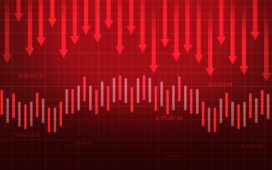Most kitchens are well-stocked with pantry staples, the foundation of all recipes. But every good chef knows that the best meals feature a variety of flavors, including some spice. Technique is important: Too much or too little of any single ingredient can make a big difference.
The same approach applies to portfolios. Earlier this year, many U.S. investors learned that their mix was off after foreign stocks significantly outpaced U.S. shares … just as the S&P 500 stumbled badly. It quickly became clear that many investors were underexposed to foreign markets and overexposed to the United States.
In a June survey, Schwab Asset Management found that moderate-risk individual investors held just 10% of their portfolios in foreign shares; U.S. stocks, by contrast, made up 61%. In short, investor portfolios weren’t diversified.
Sign up for Kiplinger’s Free Newsletters
Profit and prosper with the best of expert advice on investing, taxes, retirement, personal finance and more – straight to your e-mail.
Profit and prosper with the best of expert advice – straight to your e-mail.
It was a comeuppance long in the making. For nearly 15 years, U.S. stocks have been the place to be. Why bother to diversify — break up your investments across a variety of stocks, bonds and other assets — when the S&P 500 is beating everything?
“It can be easy to forget the benefits of diversification in a very sharp upward-moving market,” says Andrew Altfest, a certified financial planner with Altfest Personal Wealth Management in New York City.
But over time, you’ll find that a mix of investments can smooth your returns, strengthen your resolve as an investor, dampen risk in your portfolio and keep you exposed to whichever corner of the market is working at the moment — no crystal ball necessary.
In a truly diversified portfolio, some investments will be in favor while others are on the outs. “You will never own only winners, but you won’t get stuck with only the laggards, either,” says Jeff DeMaso, editor of The Independent Vanguard Adviser.
A smoother ride
A diversified portfolio can deliver less-volatile returns, which may help you stay the course during turbulent times — and arguably, that’s half the battle in achieving your investment goals.
Moderate-allocation funds, also called balanced funds because they stabilize a 60% allocation of assets to stocks with a 40% stake in bonds, have been about one-third less volatile than an all-stock portfolio over the past 10 years.
“When the stock market sells off, investors tend to sell and move into cash. The problem there is, they’ve divested. So, we always say, stay invested and diversify,” says Alessio de Longis, senior portfolio manager and head of asset allocation at Invesco Solutions.
Indeed, diversification isn’t a strategy you turn on during rough markets and switch off in roaring bull markets. “It’s something you should always have in your portfolio,” says Kristy Akullian, head of iShares investment strategy for the Americas at BlackRock.
Diversification can help ward against risk, too, of which there’s no shortage these days. U.S. stocks are trading at high valuations. The economy looks to be slowing. Inflation remains sticky. And uncertainty lingers about the impact of new government policies and geopolitical risks. All of these challenges are chipping away at investor confidence.
Some advisers zero in on risks as a guiding principle for diversifying their clients’ portfolios. Worried about a decline in the dollar? Add non-dollar assets — foreign stocks or bonds — to your portfolio. Concerned about an inflationary shock? Fold in a stake in commodities or real estate. A recession? Insert a slug of high-quality bonds or beef up on cash.
“Since I think all of these are potential sources of risk to the stock market, I put a lot of these diversified eggs into my clients’ portfolio baskets,” says Paul Winter, a certified financial planner at Five Seasons Financial Planning in Salt Lake City, Utah.
Another reason to diversify is that it’s impossible to predict which investment will outperform in any given year — so it pays to own a mix of several. “The point of diversification is that you don’t know what is going to happen,” says Thomas Martin, of Globalt Investments, an Atlanta-based investment firm, but you can be prepared just the same.
The fact is, market leadership can shift dramatically from year to year. Though large-company stocks have topped the charts in many years recently, the winning asset class in any given year is often anybody’s guess.
According to the Callan Periodic Table of Investment Returns, a colorful depiction of how asset returns can vary from year to year, small-cap stocks fared best in 2020. In 2018 and 2022, cash prevailed. And emerging markets stocks were the best-performing asset class in 2017; the next calendar year, they were the worst.
While there are rules of thumb to follow, a well-diversified portfolio is “very much an art, not a science,” says Winter. For example, you want to own multiple kinds of assets, but that does not mean you own everything in equal measure. “Depending on your overall allocation, you might not need to go super-deep on every category,” says Roger Young, a CFP at T. Rowe Price.
The good news: This is a great time to diversify. If, like many American investors, your portfolio is heavily weighted toward U.S. stocks, it’s not too late to lighten the load and find opportunities in less-expensive pockets of the market.
“U.S. stocks are near their all-time highs, and that’s a lot better time to diversify than, say, back in March 2009,” the market’s nadir during the Global Financial Crisis, says Winter.
Stocks, bonds and alternative assets are the main elements of a diversified portfolio. But you’ll want to make sure you’re diversified within those types of investments, too.
In this article, we’ll walk you through the ingredients of a good diversification plan, with some timely moves to make now and tips on how to maintain your portfolio. Prices, returns and other data are as of August 31.
Stocks

(Image credit: Getty Images)
Stocks can be risky but also rewarding. Over the past 10 years, the S&P 500, which represents more than 80% of the total U.S. stock market, has returned a whopping 15% a year.
But the stock market doesn’t move as a monolith — and within your stock holdings, you should assemble a broad mix, considering a number of factors.
Company size
The market can favor companies of a particular size — sometimes for years — depending on economic factors, industry innovations or even just market sentiment.
Over the past decade, thanks to globalization, large companies have ruled, ranking as the top-performing asset class in five of the past 10 years and among the top three performers in eight of the past 10, according to the Callan table.
“The big just got bigger,” says Jake Schurmeier, a portfolio manager at Harbor Capital. That makes exchange-traded funds (ETFs) that invest in small and midsize companies, such as the iShares Core S&P Mid-Cap (IJH) and the iShares Core S&P Small-Cap (IJR) — members of the Kip ETF 20, our favorite exchange-traded funds — good diversifiers for the large-cap S&P 500.
Some strategists see an opportunity in midsize-company stocks, especially these days. The middle tier of the U.S. stock market “is uniquely positioned to capitalize on growing demand for American-made goods and infrastructure solutions in a reshoring and energy-independent economic landscape,” says Dina Ting, head of global index portfolio management at Franklin Templeton.
Plus, on a price-to-earnings basis, mid-cap stocks now trade at an atypical discount to large caps.
Concentration
Large-company stocks’ recent run has included the meteoric rise of tech stocks in general and anything related to artificial intelligence (AI) in particular.
A group that includes Nvidia (NVDA), Microsoft (MSFT) and Apple (AAPL), known as the Magnificent Seven, accounts for one-third of the value of the S&P 500 Index. Thus, what might look like a diversified collection of U.S. stocks is in reality an outsize bet on a dazzling few.
A simple way to mitigate such overconcentration is the Invesco S&P 500 Equal Weight ETF (RSP). In this fund, every company gets an equal share of assets. So, while Nvidia accounts for 8% of the traditional market-cap-weighted index, it makes up just 0.24% of the Equal Weight fund.
Investment style
Professional investors typically hew to a certain methodology. These approaches break down into two broad styles: value and growth. Value managers favor stocks that trade at a discount to various metrics; growth managers prefer companies that are growing faster than average.
The two styles wax and wane at different times, and the cycles tend to last for long stretches. Value won the period from the start of 2000 to 2009. But since then, growth has dominated, though it’s worth noting that value stocks held up better during the most recent bear market from January to October 2022.
Because it’s difficult to predict when one style is going to outperform the other, even in a bear market, it’s important to maintain a toehold in both growth and value strategies.
Chances are, however, that you’ve got plenty of exposure to growth stocks these days. Consider adding a value-driven fund such as Dodge & Cox Stock (DODGX), a mutual fund that has outpaced the S&P 500 over the past five years, or Capital Group Dividend Value (CGDV), an ETF that has beaten the S&P 500 over the past three years.
Both are actively managed, but index-fund lovers could look at the Vanguard S&P 500 Value ETF (VOOV). The ETF holds its own among a peer group of value-oriented large-company stock funds.
Geography
You need both U.S. and non-U.S. stocks in your portfolio, although many years of U.S. out-performance made that idea unpalatable. That changed in 2025: After lagging the U.S. stock market for nine of the past 11 calendar years, the MSCI EAFE Index, a popular international-stock benchmark, is up nearly 23% so far this year, beating the S&P 500 by more than 12 percentage points.
Most strategists agree that U.S. investors need to boost their exposure to international stocks. The timing is good. A weakening dollar tends to magnify gains in foreign shares (because they translate into more dollars stateside). And foreign stocks are still cheap relative to U.S. stocks on a price-to-earnings basis, even after a strong run so far this year.
Foreign stocks include those in both developed and emerging markets. You can zoom in on a region — Europe, Asia, Latin America, say — or a single country, such as Japan, India, Germany or China. And of course, at every level, you can focus on company size or value or growth approaches.
Start with the Vanguard Total International Stock ETF (VXUS). It’s an inexpensive way to get instant exposure to nearly every foreign stock in developed and emerging markets. Morningstar analyst Zachary Evens calls it “wall-to-wall foreign-stock exposure.” The fund has gained 23% since the start of the year.
Add an emerging-markets index fund. The iShares Core MSCI Emerging Markets ETF (IEMG) tracks an index of 20-odd developing markets. “A weaker dollar is good for EM stocks,” says Richard Cook, a portfolio manager of Cook & Bynum fund. A recent rebound in Chinese stocks — 27% of the index — has helped the fund return 18% over the past 12 months.
Baron Emerging Markets (BEXFX) — a member of the Kiplinger 25, our favorite no-load mutual funds — is actively managed, growth focused, and has gained 19% over the same period.
These days, many strategists, including T. Rowe Price’s Charles Shriver, see opportunity in small, foreign companies. They typically trade at a premium to their larger brethren, but not now. And “small-cap international stocks will benefit from domestic economic growth in home countries and are less sensitive to tariffs,” he says.
We have our eyes on the Avantis International Small Cap Equity ETF (AVDS) and the Dimensional International Small Cap Value ETF (DISV). The Avantis fund invests in a mix of growth and value small companies, with a focus on valuation and profitability. Over the past 12 months, it has gained 23%. The Dimensional exchange-traded fund focuses on bargain-priced small stocks in developed countries and has returned 25% over the past 12 months.
Bonds

(Image credit: Getty Images)
Bonds provide ballast to the stock side of any portfolio, generally speaking, because when stocks fall, bond values tend to rise. That didn’t happen in 2022, when a precipitous rise in interest rates pushed both stocks and bonds down (bond prices and yields move in opposite directions). The S&P 500 fell 18%, and the Bloomberg U.S. Aggregate Bond index sank 13%.
It was the worst year ever for bonds, but a few fixed-income sectors held up better. Bank-loan funds, for instance, lost 2% on average; short-term bond funds dipped just 5%. Ergo, in 2022, a diversified bond portfolio would have outperformed the Agg index.
Broadly speaking, there are four major bond sectors: government, corporate, securitized debt (bundled IOUs such as mortgages or auto loans, say, that are sold as a single security), and municipal bonds, which pay income that’s exempt from federal and sometimes state taxes.
A diversified bond portfolio will include a mix of sectors. The Agg index, for instance, is diversified as far as sectors go: Government bonds make up just less than half of the index, corporate and securitized debt combined are another 50%, and the rest sits in cash and muni IOUs. But there are more layers of bond diversification to consider.
Credit quality
Credit ratings reflect a borrower’s financial ability to repay debts. The higher the rating, the more creditworthy the issuer is, and vice versa. That’s why investment-grade bonds, rated between triple-A and triple-B, are considered high quality — there’s little risk of default. Debt rated between double-B and triple-C is often called junk or high yield — there’s a higher risk of default, and therefore yields are higher to attract investors.
Bond portfolios should hold mostly high-quality debt at their core. The Vanguard Total Bond Market ETF (BND) and the iShares Core U.S. Aggregate Bond ETF (AGG) are the biggest index-based high-quality bond ETFs. But we prefer active strategies, such as Baird Aggregate Bond (BAGSX) and Dodge & Cox Income (DODIX). Both mutual funds are members of the Kiplinger 25.
Then consider adding lower-quality debt, which can boost the overall yield of a bond portfolio. In late August, for instance, U.S. high-yield corporate debt yielded 6.7%, and bank loans, issued by companies with low credit ratings, yielded 8.6%.
Our favorite high-yield corporate fund, Vanguard High-Yield Corporate (VWEHX), favors higher-quality, double-B junk bonds. But with economic uncertainty ahead, we’re partial these days to short-term high-yield bond funds such as the Pimco 0-5 Year High Yield Corporate Bond Index ETF (HYS). Its short-term focus can help dampen default risk, a concern if the economy slows.
Duration and maturity
Investors often confuse duration, a measure of a bond’s sensitivity to interest rate moves, with maturity, the length of time a bond will pay interest before it repays the principal. They’re not the same, but they are connected.
Maturity plays a part in the calculation of duration. The longer the maturity, the longer the duration and the more sensitive a security is to interest rate shifts.
The typical long-term government bond fund, for example, has an average maturity of 20 years and a 16-year duration. That implies if rates were to rise by one percentage point, the net asset value of long-term government funds would decline 16%, and vice versa. Short-term government bonds have an average maturity of three years and a duration of 2.6 years.
Generally, low-duration bonds are a defensive bet when interest rates are rising, and high-duration bonds stand to benefit most when rates fall. These days, however, even though cuts in short-term rates are on the docket, a fall in long-term rates isn’t guaranteed, says Akullian, the iShares strategist. That’s why she favors intermediate-maturity bonds for now.
The iShares 3-7 Year Treasury Bond ETF (IEI) sports a 4.3-year duration. Since the start of the year, it has returned more than 5%. The actively managed Vanguard Intermediate-Term Bond ETF (BIV) favors bonds with maturities of five to 10 years and has a duration of 6.1 years. Its portfolio holds government and corporate debt of medium maturities. So far this year, it has gained 6.4%.
Finally, the Fidelity Investment Grade Securities ETF (FSEC) holds mostly triple-A-rated securitized debt and has a duration of 5.5 years. Its return so far this year is 5.3%.
Geography
For much of the 2010s, foreign bonds sported negative yields. “That’s a hard sell,” says Schurmeier, the Harbor Capital portfolio manager. But now, foreign bonds offer positive yields, as well as a potential return boost from a weakening dollar. The Vanguard Total International Bond ETF (BNDX) holds high-quality, foreign corporate and government bonds.
Emerging-markets debt offers fatter yields, but these IOUs tend to be more volatile, too, so buyer beware. Our favorite emerging-markets bond fund, Vanguard Emerging Markets Bond (VEMBX), invests in dollar-denominated debt, which becomes easier for developing countries to repay as the dollar weakens.
Alternatives

(Image credit: Getty Images)
This catch-all category includes nontraditional strategies that seek to hedge stock and bond market returns, or at least to generate returns that don’t move in lockstep with them.
Alternative strategies might focus on gold, commodities, cryptocurrencies, or the debt or equity of private companies. They might employ techniques to limit losses in a downturn but crimp bull market gains. Others balance bets on undervalued stocks by short-selling overpriced names.
“Many alternative strategies weren’t even a thing 10 years ago, but they are today,” says Winter, the Salt Lake City CFP.
Consider carving out a small slice from the bond side of your portfolio to devote to alternative assets — no more than 5% to 10% of your overall portfolio, says de Longis. One approach to choosing an alternative strategy is to figure out what kind of risk you’re trying to hedge against, such as those listed below, and invest accordingly.
Inflation
To hedge inflation, for instance, beyond the protection the stock side of your portfolio may offer, consider commodities. These funds proved their mettle in 2022, returning 16%, on average.
The First Trust Global Tactical Commodity Strategy Fund (FTGC) has outperformed its peers in four of the past five calendar years, with below-average volatility. Neuberger Berman Commodity Strategy ETF (NBCM) boasts above-average returns with below-average volatility, and its expense ratio is below average, too.
Instability
To ward against uncertainty, consider gold. “Gold is a safety net for chaos,” says Schurmeier. Trade-war fears have fueled 29% gains in the iShares Gold Trust Micro (IAUM) and the SPDR Gold MiniShares Trust (GLDM, $68, 0.10%) so far this year.
Volatility
To smooth out your returns, consider one of a new breed of ETFs called defined-outcome funds.
One we’re eying is the Innovator Defined Wealth Shield ETF (BALT). Using options, the fund provides a 20% buffer on losses in the S&P 500 every three months in exchange for a cap on gains. You can hold the ETF indefinitely. The 20% buffer and cap on gains resets quarterly, in January, April, July and October. The cap set in early July was 2.2% after expenses. Over the past three years, Defined Wealth Shield has returned 7% annualized with less volatility than the Agg index.
Bear in mind that diversified portfolios, in contrast to Tolstoy’s happy families, are not all alike. As always, everything depends on your time horizon and your risk tolerance.
“If you’re relatively young and are primarily invested in stocks, you might want to make sure your diversification is robust on the stock side, but on the bond side, your small piece in bonds could be a straightforward U.S. investment-grade type of bond fund portfolio,” says T. Rowe Price’s Young. Similarly, those who are nearing retirement or already retired will want to pay special attention to some inflation hedges.
Over time, your portfolio will need some fine-tuning. Some tweaks are related to age or life stage, says Christine Benz, director of personal finance and retirement planning for Morningstar.
At age 50, for instance, you’ll want to de-risk your portfolio a bit around the edges. Tilt toward high-quality, large-company stocks over small-cap fare, for instance. Or favor dividend payers. By your late fifties or early sixties, start shoring up your portfolio with safer assets. On the bond side, for instance, lean into high-quality short and intermediate-term bonds and build up your cash position.
Other adjustments may be tactical, such as investing more in large and midsize companies than in small firms if a recession looms, or favoring short-term bonds over long-maturity debt when interest rates are climbing. Keep the tactical moves to no more than five to 10 percentage points up or down from your overall portfolio targets, says Invesco’s de Longis. Any bigger, and you risk derailing your asset-allocation plan.
Finally, review your portfolio asset mix and rebalance, if necessary, once a year. “The more diversified your portfolio, the greater the potential benefits of rebalancing,” says Winter. Just don’t go overboard. Think of your portfolio like a bar of soap, suggests Benz: “The more you touch it, the smaller it’s going to get.”
Note: This item first appeared in Kiplinger Personal Finance Magazine, a monthly, trustworthy source of advice and guidance. Subscribe to help you make more money and keep more of the money you make here.





